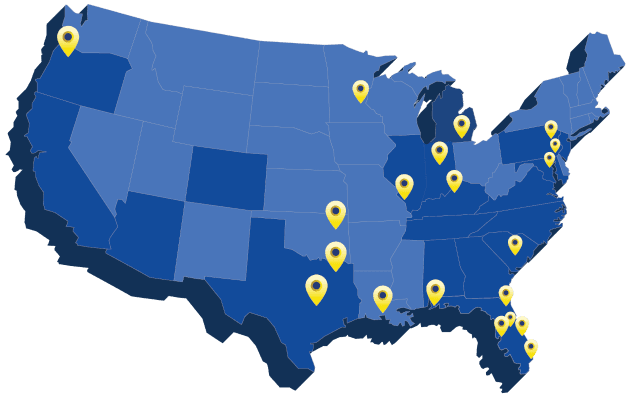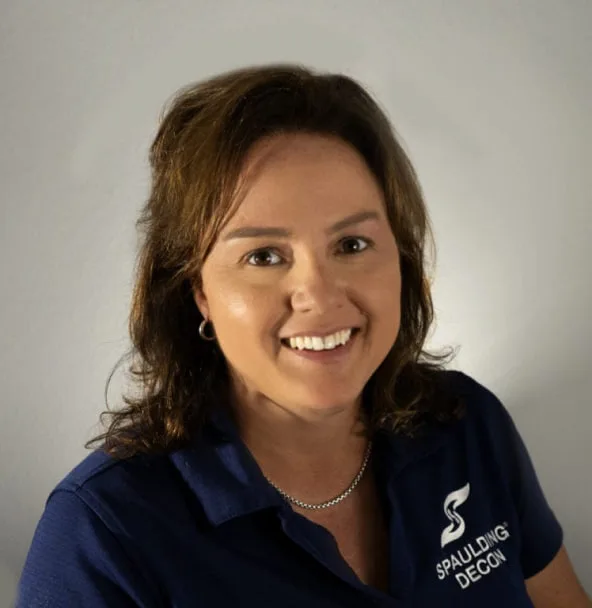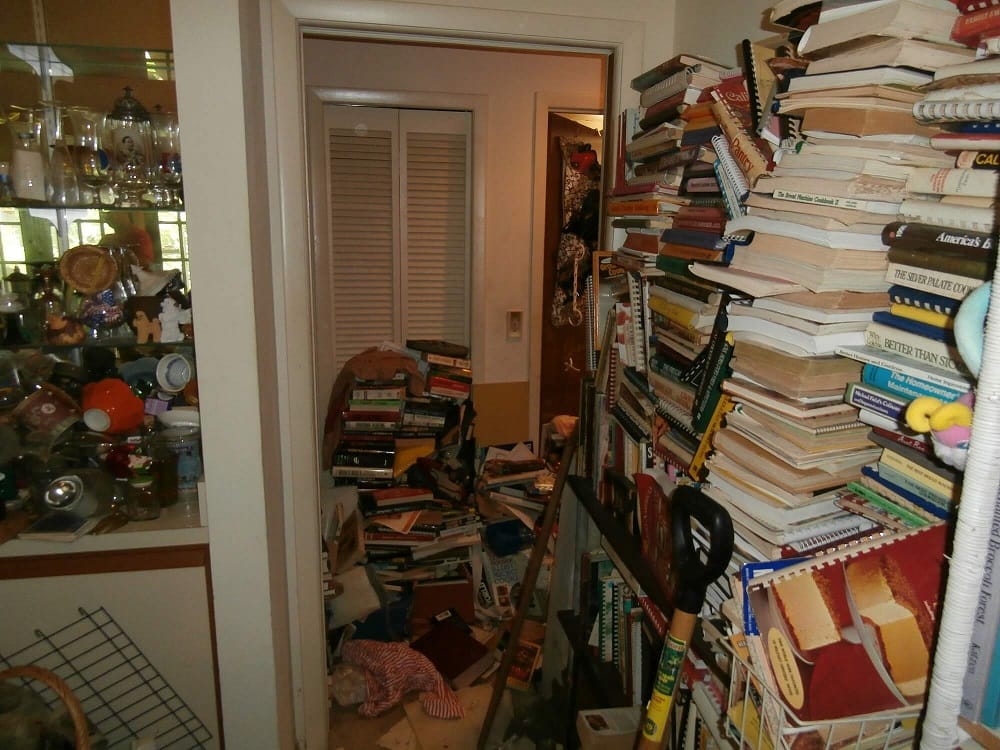Critical Warning Signs of Compulsive Hoarding
Cleaning up a hoarder’s house can be a tough project. If you want to intervene before things get out of control, watch out for these 7 warning signs of compulsive hoarding.
Need Immediate Hoarding Cleanup Help? Our trained professionals are available 24/7 for compassionate, discreet cleanup. Call us for a free consultation.
We’ve all seen compulsive hoarders shown on TV, their homes overflowing with random junk and clutter. However, real-life hoarding can be harder to spot and even more difficult to take care of. Helping a hoarder realize that they have a problem is best done before the hoarding gets out of control.
How can you recognize compulsive hoarding before it spirals out of control?
There are some signs that indicate you or your loved ones have turned to compulsive hoarding. Here are a few of the hoarding warning signs that you should watch out for.
What is Compulsive Hoarding?
Compulsive hoarding is a mental health disorder that makes it extremely difficult for individuals to discard their belongings, regardless of their value.
It is considered a psychological disorder, as those with hoarding tendencies find it extremely hard to stop collecting items. It can affect both their lives and the lives of those around them.
Individuals with this disorder will continually collect items over their lifetime and hold onto them, storing them away regardless of the item’s actual value. This can make their homes nearly unlivable as the halls and rooms in the home overflow with more and more items.
While hoarders are commonly viewed as filthy people living with their houses full of junk, compulsive hoarding can range from mild to severe in nature. Mild cases may not view their hoarding as an actual problem, making it very difficult to treat.
Key Characteristics of Hoarding Disorder:
- Persistent difficulty discarding items, even if they are useless.
- Excessive accumulation of objects, often creating cluttered, unsafe living conditions.
- Severe emotional distress when attempting to declutter.
- Impaired daily living due to hoarding behavior.
Did you know? The American Psychiatric Association (APA) classified hoarding disorder as a separate mental illness in 2012, recognizing its unique symptoms and impact.
Hoarding vs. Collecting – What’s the Difference?
| Hoarding | Collecting |
|---|---|
| Disorganized accumulation of random items | Organized and intentional acquisition |
| Clutter overtakes living spaces, making rooms unusable | Displayed items are stored in a neat, accessible way |
| Causes significant distress when parting with items | Items can be sold, traded, or donated without anxiety |
| Impacts daily life, relationships, and safety | Collection does not interfere with daily activities |
Mild hoarding may not be immediately noticeable, but as it worsens, it becomes harder to ignore. Below are the critical warning signs to watch for.
Signs of Compulsive Hoarding
There are several signs that indicate someone is becoming a compulsive hoarder. Here are some of the signs that you should watch out for.
1. There’s Always Clutter
While everyone’s homes will gather some amount of clutter from time to time, people without compulsive hoarding disorders will go through and clean their homes regularly. Therefore, the clutter is temporary and will disappear over time.
In a hoarder’s home, however, this clutter will never be completely gone. You may notice that more clutter accumulates over time, simply stacking on top of the existing mess. Hoarders have a hard time getting rid of clutter, so you are unlikely to ever see the home truly clean.
Quick Tip: If clutter keeps piling up, start by suggesting a “one-item-per-day rule”, where they let go of one thing daily. Small steps reduce emotional distress.
2. Emotional Distress When Discarding Items
If you are able to convince a hoarder to clean, they may show extreme distress while in the act of getting rid of items. They may use every excuse they can in order to keep certain items, and when forced into getting rid of something, they may have emotional outbursts.
Pay attention to how your loved ones react as you help them declutter their homes. If they have a hard time choosing between items to part with or show an odd attachment to junk or meaningless items in their home, then they may be showing hoarder warning signs.
Quick Tip: If a loved one panics or becomes defensive when asked to throw things away, they may be struggling with hoarding disorder.
3. Avoiding Visitors
Does your loved one use any excuse they can to meet up anywhere besides their home? If so, they may be hiding their compulsive hoarding disorder.
Having you over to their home means that they will have to explain the clutter and mess that their home has become. By inviting you out somewhere else, they can hide any signs that they have a problem.
Of course, this sign should not be taken on its own, as it doesn’t always indicate issues with hoarding. Make sure to examine other pieces of evidence before jumping to any conclusions.
Quick Tip: Instead of forcing them to invite people over, gently offer help by suggesting a decluttering session together.
4. Shopping Addiction & Over-Acquisition
People with a compulsive hoarding disorder also tend to have shopping addictions. This allows them to add on to their collection as much as they want. This may also result in them being unable to pay their bills or purchase necessities.
Pay close attention to your loved ones spending habits and finances. If you notice anything strange with these habits, you may need to talk with them.
Quick Tip: Look for excessive shopping habits, especially when they result in unopened packages, financial strain, or excessive stockpiling.
5. Possessiveness Over Items
Hoarders have a hard time allowing other people to use, borrow, or even touch their possessions without becoming hostile. Their belongings are theirs alone and cannot be given away or disposed of. After all, you may throw it away or keep it from them after you borrow it.
Quick Tip: If your loved one refuses to lend, donate, or discard items, they may have difficulty detaching from possessions.
6. Hoarding Multiple Pets
Having more pets than a person can reasonably care for is another form of hoarding. This is not only terrible for the owner, but for the pets as well. They won’t receive proper care, food, and treatment, so as soon as you see someone hoarding too many animals, you should call animal control or your local humane society for guidance.
Quick Tip: If someone has too many pets for their space and resources, animal hoarding could be a serious concern.
7. Obsession with Their Collection
Hoarders love to talk about the items that they have acquired and will talk endlessly about their collection. You may find your conversations always being brought back to their belongings and the new items they want for their collection.
You may also find yourself constantly talking about the home’s clutter with your loved one. If you are always discussing the state of the home and the items your loved one is accumulating, that’s a good sign that they have a problem.
Quick Tip: If a loved one prioritizes objects over relationships or experiences, hoarding may be taking over their thoughts.
Feeling Overwhelmed? Our trained professionals can assist with hoarding cleanup at any stage. Call now!
Are these signs familiar? Learn about the 5 Stages of Hoarding and when it’s time to intervene.
How to Help Someone with Hoarding Disorder
Hoarding is a mental health condition, not just a messy habit. Here’s how you can help:
- Approach with Compassion – Avoid judgment; hoarding is often linked to anxiety or past trauma.
- Encourage Small Steps – Sudden cleanouts can be overwhelming. Start with small, manageable decluttering goals.
- Seek Professional Help – Therapy and hoarding cleanup specialists can help address the root cause and create a safe home.
Did you know? Most of the hoarders resist help from family and friends. A professional, non-judgmental approach can make a huge difference.
Professional Hoarding Cleanup Services
Are you concerned about one of your loved ones? Do they display any signs of compulsive hoarding?
Extreme hoarding can result in unsanitary conditions, fire hazards, and structural damage. If hoarding has made a home unsafe, professional intervention may be necessary.
Why Choose Spaulding Decon for Hoarding Cleanup?
✔ Discreet & Compassionate Service – We understand the emotional challenges of hoarding.
✔ Certified Biohazard Cleanup – We handle sanitation, waste disposal, and hazardous materials.
✔ Quick & Efficient Process – Our team works fast, restoring homes to safe conditions.
✔ Flexible Financing Options – We offer affordable payment plans to fit your budget.
If hoarding has made a home unsafe, our team specializes in compassionate, discreet hoarding cleanup. We work with families and professionals to create a personalized cleanup plan. Call us today at 866-726-2316 for a free consultation.
Take Action Today
Hoarding disorder worsens over time, making early intervention crucial. If your loved one is showing signs of compulsive hoarding, take the first step today:
- Start a compassionate conversation about their living conditions.
- Encourage professional help, including therapy or cleanup services.
- Seek expert guidance from hoarding cleanup specialists.
Want to learn more? Read our in-depth guide on the 5 Stages of Hoarding
Curious about other hoarding facts? You can continue reading our blog for more helpful information.

More Information
Here are more resources to help your loved ones.




